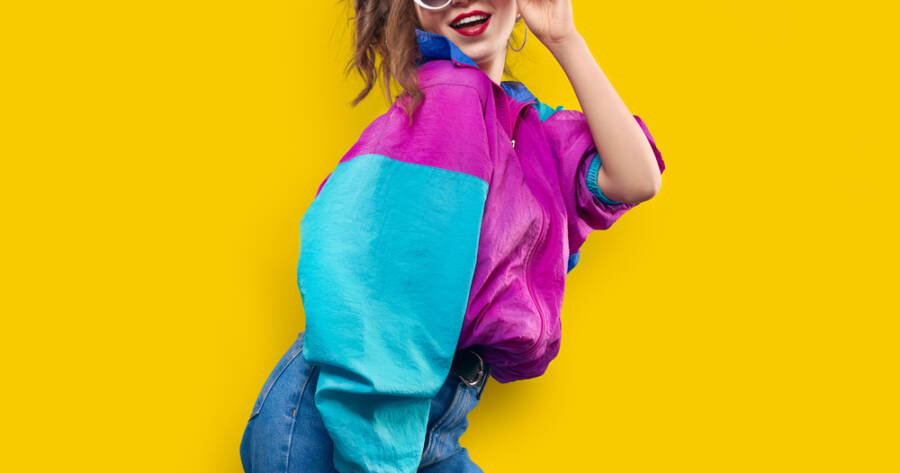Fashion is an ever-evolving tapestry, intricately woven from the threads of past decades. Classic styles often return to center stage, reimagined for modern tastes and sensibilities. Each decade brings unique elements that designers revisit, blending nostalgia with innovation. Examining the timeless appeal of these styles might inspire a deeper appreciation and inspire fresh creativity in modern wardrobes.
The Roaring Twenties: Flapper Flair
The 1920s marked a dynamic shift in fashion with the rise of the flapper style. Characterized by dropped waists, loose silhouettes, and intricate beadwork, this era symbolized liberation and rebellion against traditional norms. Fabrics like silk and chiffon dominated, accentuating movement and freedom.
Modern interpretations of the flapper style embrace these elements while infusing contemporary materials and cuts. Dresses with fringe details, art deco-inspired patterns, and muted color palettes often appear on modern runways. This blend of old and new embodies the audacious spirit of the Roaring Twenties while catering to modern sophistication.
The Fabulous Fifties: Rockabilly Revival
The 1950s brought forth a return to elegance with tailored silhouettes, nipped waists, and full skirts. Rockabilly influences, bold prints, and playful accessories were central to the fashion of this decade. Cinched waists and structured coats exuded femininity and grace.
Today, the retro appeal of the fifties is found in A-line dresses, polka dots, and cat-eye glasses. Designers may reinterpret these elements with modern fabrics, producing high-fashion pieces with vintage charm. This reinvention offers a playful nod to the fifties while fitting seamlessly into contemporary wardrobes.
The Swinging Sixties: Mod Magic
The 1960s ushered in a wave of innovation, with mod fashion taking the spotlight. Geometric patterns, bold color blocks, and mini skirts became synonymous with the era. The influence of pop culture and art movements lent a fresh, experimental edge to clothing.
Today’s mod-inspired looks often utilize sleek lines, vibrant hues, and graphic prints reflective of this period. Designers reinvent these themes through modern eyewear, footwear, and accessories, creating an effortlessly cool aesthetic. Mod magic lives on, influencing those who embrace the edgy, artistic expressions of the sixties.
The Groovy Seventies: Bohemian Bliss
The 1970s celebrated individual expression, embracing bohemian styles with flowing fabrics, earth tones, and intricate embroidery. The era’s fashion rejected conformity, favoring eclectic mixtures of patterns and textures. Natural fabrics like cotton and suede dominated the scene.
In contemporary fashion, bohemian elements resurface in floaty maxis, embroidered jackets, and flared pants. Designers often incorporate sustainable materials, staying true to the environmental consciousness of the seventies. Bohemian bliss remains attractive for those seeking relaxed, artistic, and free-spirited styles.
The Bold Eighties: Power Dressing
The 1980s saw bold statements with power dressing, characterized by sharp shoulders, oversized blazers, and vibrant colors. This fashion reflected ambition and confidence, often incorporating metallic and exaggerated silhouettes. Athletic wear also transitioned into everyday fashion during this decade.
Modern renditions of eighties fashion experiment with proportion and boldness, blending sleek tailoring with exuberant accessories. Today, one might find power suits, neon accents, and glamorous evening wear reinvented with contemporary flair. The audacious spirit of the eighties continues to inspire creativity and confidence.
The Trend-Defining Nineties: Minimalist Cool
The 1990s introduced minimalism, featuring clean lines, neutral tones, and functional wear. Streetwear emerged with relaxed fits, denim, and logos, embodying the casual coolness of the decade. The influence of music and subcultures was evident in fashion choices.
Current fashion trends revisit nineties minimalism through streamlined basics, slip dresses, and sporty aesthetics. Designers emphasize comfort and simplicity while incorporating modern elements like sustainable materials and innovative cuts. This minimalist approach allows for individual expression within clean, versatile designs.
Celebrate Timeless Style
Fashion’s cyclical nature allows for the joyful reinvention of classic styles, tying the past to the present. From flapper flair to minimalist cool, each decade offers unique influences reimagined for modern tastes.
Designers blend nostalgia with innovation, creating styles that resonate with diverse audiences. Embracing these timeless trends fosters creativity and personal expression. Exploring classic styles invites a renewed appreciation for the rich history and endless potential of fashion.

